Brush Lettering For Beginners: Tools, Tips, And Techniques
Do you want to learn Bullet Journal lettering?
Well, you’re in the right place! Today we are discussing how you can learn and improve your lettering skills to make your Bullet Journal pages look even better.
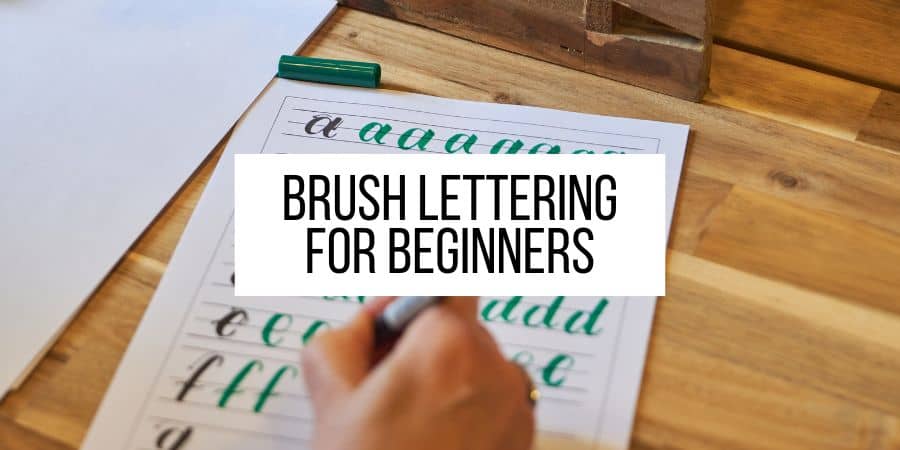
Ok, first of all, BIG DISCLAIMER: I’m not a professional letterer, and I don’t have any art education. I’m just like you guys – learning it all as I go, from zero.
BUT! I think THAT’S A GOOD THING!
Because I can totally relate to your grieves and pains because I was in your exact same position at some point, and that makes me a great source of help to get you where you want to be.
Just like you guys, at the moment, I’m working hard on improving my lettering skills and learning all I can about it.
In this post, I want to share all the tips and techniques I picked up on the way and some amazing resources you can use on your journey.
Be sure to scroll until the end to get some lettering freebies!
Let’s dive in and start from …..
This post may contain affiliate links. They will be of no extra expense for you, but I receive a small credit. Please see my Disclosure for more details. Thank you for supporting Masha Plans!
Lettering Materials
Lettering is not all about the tools, so don’t go crazy buying all the pens you can find (yet!).
Still, you’d want to have a few good ones to help you practice, plus some other things.
Brush Pens
Some of the most popular brush pens on the market are Tombow Dual Brush Pens, and that’s for a good reason.
They have a flexible tip that is easy to control and perfect for beginners. They also have a marker tip, which will allow you to fix some mistakes in your lettering when you are starting up.
They come in a variety of colors, and each set also has a blending brush, which means that you can start experimenting with mixing colors right away if you want to.
They might be expensive, but it’s a great investment for your lettering and your Bullet Journal.
- Updated color palette now includes 533 Peacock Blue
- Ideal for hand lettering, watercolor, fine art, illustrations, doodling, journaling, coloring and more
- Water-based
Another brush pen I recommend you to use is -again- a Tombow one: Tombow Fude. They are cheaper and come with two tips – hard and soft.
These pens are great for learning to letter because they are much easier to control than your usual brush pen. Plus, the smaller tips allow for smaller letters, so these pens are perfect for daily headers and other small elements like this.
- Contains both the soft and hard tip Fudenosuke Brush Pens
- Features a flexible brush tip for different lettering and drawing techniques
- Create extra fine, fine or medium strokes by a change in brush pressure
If you’re looking for a budget option, you can start with Crayola Super Tips. Even though they are not exactly brushing pens, they still have that special tip that makes brush calligraphy possible.
They come in various colors and have a very friendly price tag!
- One 50-ct pack of Crayola Super Tips Washable Markers
- Super Tip Markers make thick or thin lines for a variety of coloring techniques
- Washable marker set easily washes from skin and most washable clothing
For more recommendations, check out my post The Best Pens For Brush Lettering.
Paper
When you start learning to letter, it’s all about following the rules. You have to learn the rules before you start breaking them!
The important thing about it is keeping your lines straight and the same height for your letter. To make sure you do, I really recommend using penmanship paper.
A little tip here – when you print your worksheets, be careful what paper you use.
If you use ordinary printing paper, it might damage your brush pens, and you really don’t want that! I recommend you use this paper.
But you can also just use a good notepad for your lettering; my choice would be an Archer and Olive notepad, which you can also get 10% off if you use my code MASHA10.
Alternatively, another great choice would be a Rhodia notepad.
Both these options will not damage your brush pen.
- A4 in size
- Paper within the notepad is made from Clairefontaine 80 g Superfine Vellum
- 80 detachable micro perforated sheets
Anatomy Of A Letter
Don’t be scared – we are not doing a scientific study here, and I won’t be boring you with tons of technical language.
But there are a few things you should know because, believe me – it will completely transform your lettering and make it look much better.
The only thing I want to talk about here is these basic lines – base line, X height, ascender, and descender.
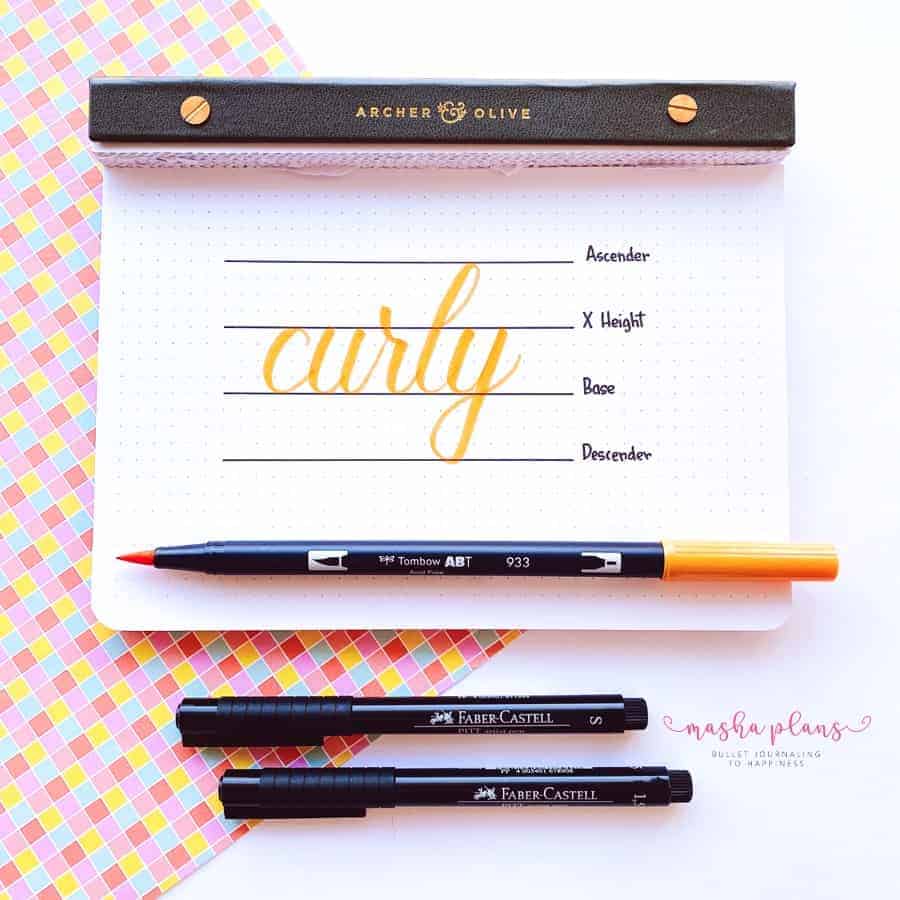
- Base Line
Baseline is basically where your letter sits.
The main body of each letter’s bottom should be on top of this line.
- X Height
This is where you can find the top of lowercase letters.
Lowercase letters like x, but also a, c, o, m, and so on set between base like and X height.
- Ascender Line
This line is for strokes that go above the usual x height. Think of letters like k, h, l, and so on.
Those letters have strokes higher than x-height, but they go only as high as the ascender line.
- Descender Line
This is pretty much like an ascender line, but this time it’s strokes that go beyond the baseline.
Think of letters like j, y, p, and so on.
Why Should You Know The Letter ANatomy
Ok anatomy of a letter is a pretty simple concept, but still – why should you spend time learning about it?
First of all, because the name of the game with lettering is consistent.
All your letters to look good must have similar sizes, shapes, spacing, and so on. So once you understand these baselines, you’ll be able to maintain your lettering consistent, and therefore make it look that much better.
Another reason is the fact that you can break the rules, play with the lines, and create different effects in your lettering.
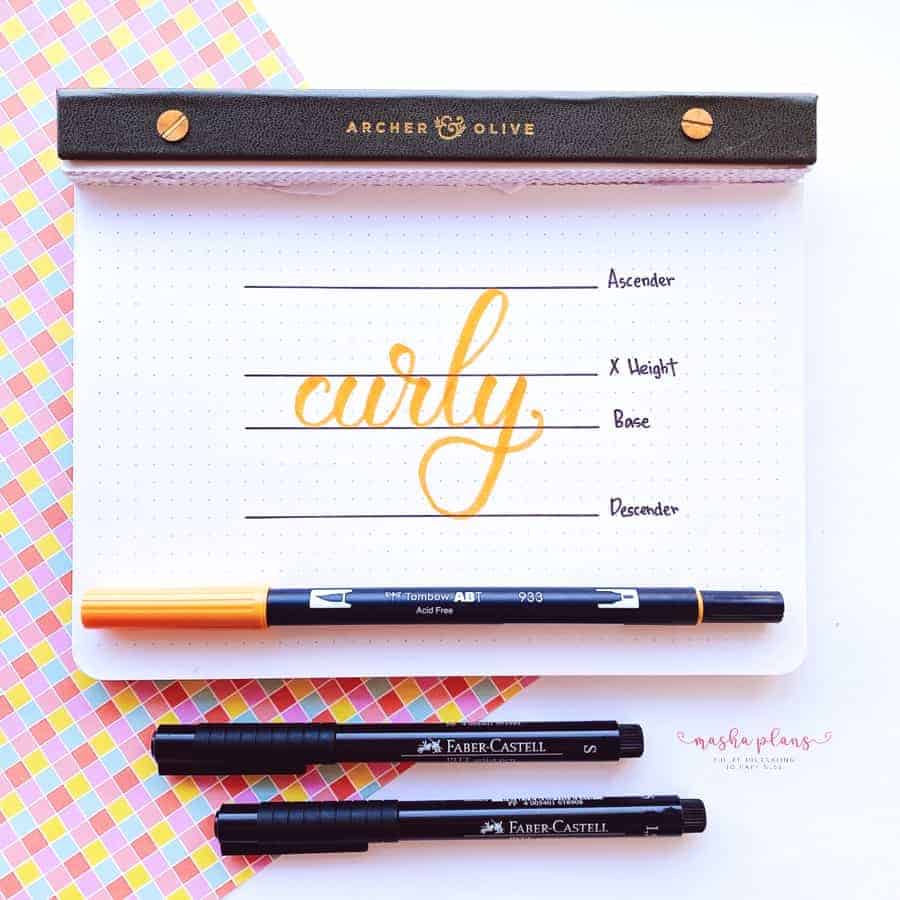
For example here, my descender and ascender are spaced much further from the main body of the letter.
This can be a fun trick to use if you’re doing more of a decorative style full of flourishes.
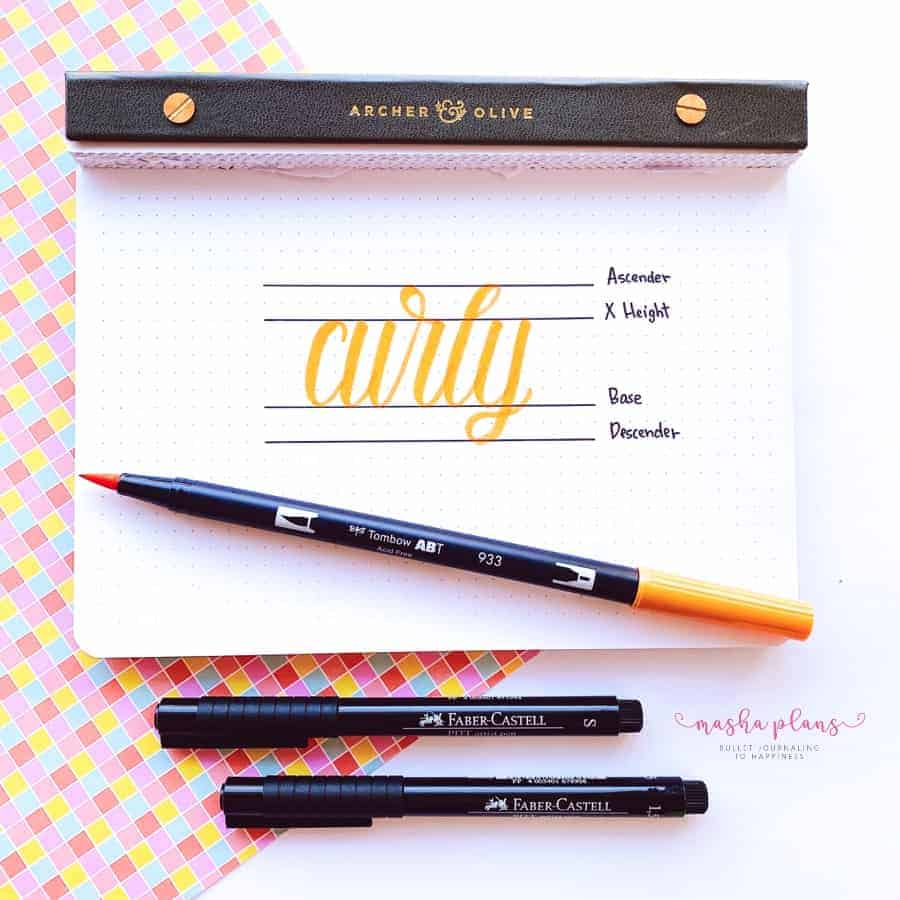
Here the base and x-height lines are much further apart, which helps create a more prolongated style.
At the same time, since I still use the lines, all the letters are very consistent,
Adjusting The Grip
A lot of your lettering depends on the way you hold your brush pen. You should hold it at an angle to your paper.
That way, you’ll easily get thicker lines, and you won’t be feathering the brush tip. You should allow the tip to flex when you go down and unflex when you go up.
Do you grip your pen next to the tip, or hold it somewhere in the middle? This depends on you. You know now how your tip should be; take time to figure out what’s the most convenient way for you to hold your brush.
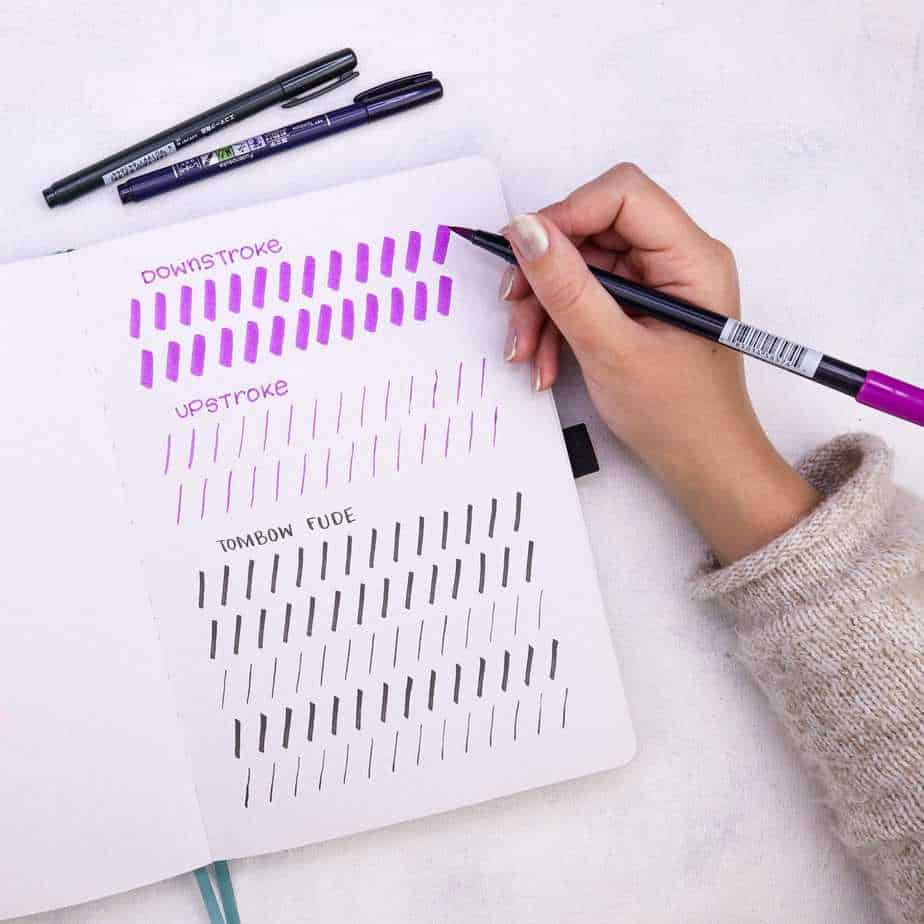
Speaking of the grip, be careful with death grips! When you write, it’s not just your pen moving; it should be your hand and arm moving as well. Having a very strong grip on the pen might just add extra pressure to muscles and negatively influence the result.
Finally, be sure to check out how your paper is positioned. The best way is to position it at a 45% angle, you know, as they taught you at school when you were learning cursive. The teachers really knew their stuff!
Brush Lettering Trick: Basic Strokes
Once I got my first brush pen, I went straight to lettering words. I saw how so many people lettered beautiful quotes so easily that I firmly believed I could do it on my first try as well!
When I failed miserably, it was a very disheartening and frustrating experience.
To avoid that – start by practicing not words or letters but basic strokes. All letters consist of these basic strokes and once you’ve mastered them, creating pretty letters will be that much easier.
The main concept for your basic strokes and the biggest trick to master calligraphy is – thick downstroke and thin upstroke.
Sounds pretty easy, right?
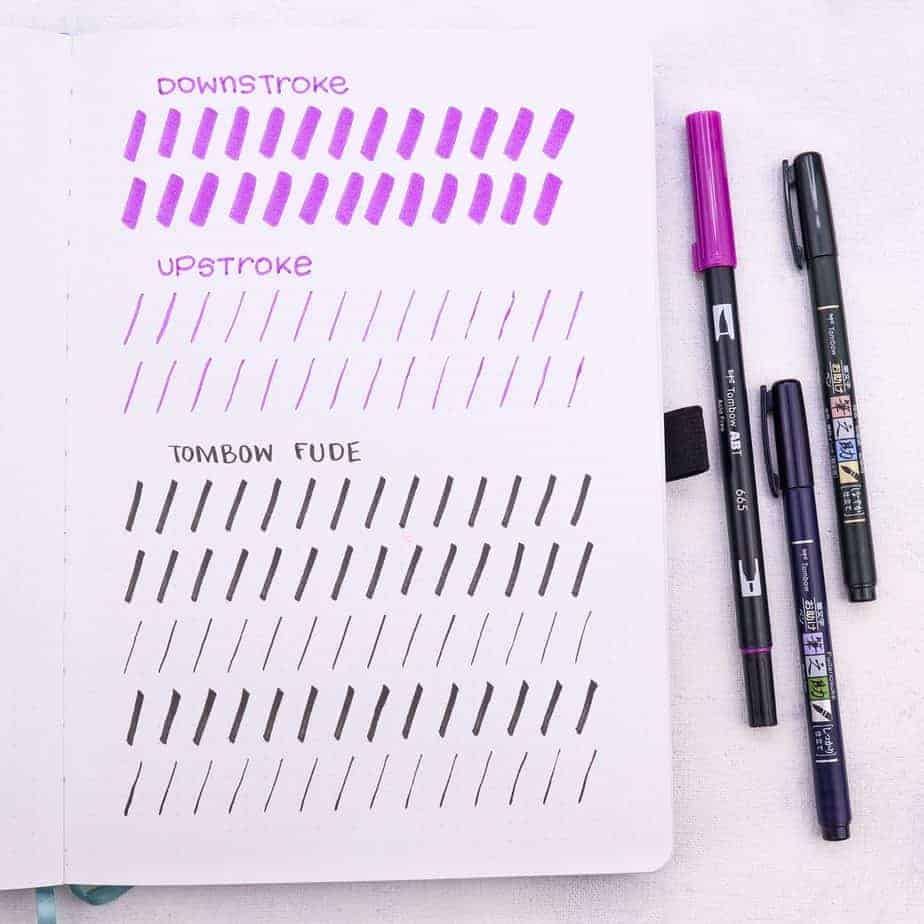
When you just start learning to letter, do tons and tons of these simple strokes. Doing the drills create muscle memory that, in turn, will help you master more difficult elements.
Once you’re confident with your up and down strokes, try out these more complicated strokes.
I’m sure you can see how they are important elements for your future letters – loops for l’s, j’s, and g’s, and connections for m’s and n’s.
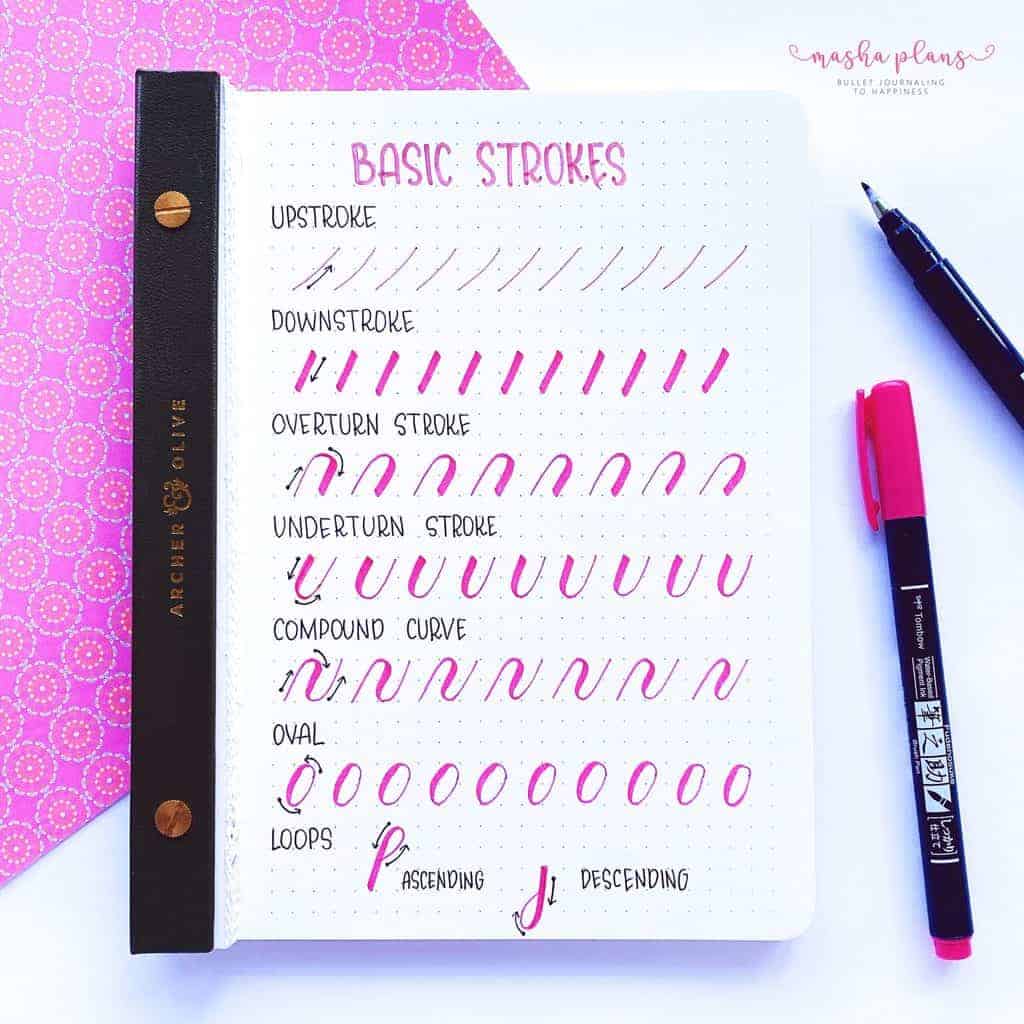
When you’re practicing, remember that lettering isn’t like writing. You’re free to take your hand off the paper when you’re done with a stroke.
For example, the m shaped strokes – as soon as you complete the downstroke, lift your hand up and move it a bit before you start off the upstroke.
In case you’d like to see the basic strokes in a video format, here is an amazing tutorial by one of my favorite calligraphy teachers – The Happy Ever Crafter.
I learned brush lettering with the help of her videos, so I thought it would be perfect for you as well!
Practice Lettering
Wanna know the secret to improve your lettering? Practice!
There’s no special technique or trick which will make you a master hand letterer in no time. Other than practicing, that is!
The best way to practice your lettering is by using worksheets. It can be just a grid paper to orient you on the placing of your letters, or it can be lighter-colored words and letters that you can trace over.
Tracing over already written letters and words is very useful because you can develop your muscle memory to learn a new font, and you also can take time with your curves to make sure you draw them correctly.
There are many amazing worksheets to help you practice lettering on Etsy, or you can get some of these fantastic Amazon books.
But I wanted to have a little something for everybody too! So if you check the Resources Vault as well, so you can get these free penmanship paper and practice sheets for months of the year and days of the week.
For more free worksheets, be sure to check my post with 31+ Free Printable Lettering Practice Sheets.
Make Brush Lettering A Habit
Practice is the secret, but between your job, chores, family, and friends’ obligations – how can you possibly find time for that?!
Believe me, I know! I struggle to find the time or even allow myself to do anything other than work these days.
However, there are little tricks you can apply to make sure you spend some time on your lettering.
- Just find 5 minutes. If you simply do one practice sheet a day, I guarantee you that soon you’ll see the progress. And doing that little won’t take more than just 5 minutes.
- Use a timer. Set the timer for 10-15 minutes (or be rebellious and do all 25 minutes!) and spend that time focused on just lettering. Put away your phone!
- Practice at the same time every day. This really helps you to establish lettering practice as a habit. You’re training yourself to be Pavlov’s dog – each day at the same time you’ll feel the urge to do and do your lettering routines.
- Create a habit tracker. A great way to keep yourself accountable is by using a habit tracker. Add lettering practice to your list of habits, and make sure you follow through with it every day.
- Add it to the existing routine. This is the easiest way to get the new habit stuck, not just lettering. If you already have your BuJo time, why not add to it 5 minutes to spend on lettering practice?
Learn To Letter: Resources
I can’t really teach you each and every detail on how to improve your lettering skills, so I decided to do the next best thing – share with you my favorite resources that can help you on your journey.
Free Online Classes
I’m a huge fan of online education. In fact, I’m quite sure I learned more useful skills from online classes than I did in college. I majored in Japanese history and politics, and believe me, it didn’t help me with doing my taxes or building my blog. It did turn me into an avid anime watcher thought.
But I digress!
Online education is a great way to master any new skills without getting into your student loans, and my go-to place for classes on any topic is Skillshare. This platform offers classes in any area by thousands of amazing teachers.
The best part is that you can take all the courses for free since you get one month FREE of Skillshare if you follow this link.
I learned tons of skills there, Bullet Journal-related and otherwise, but here, of course, I’m sharing with you, my favorite lettering classes.
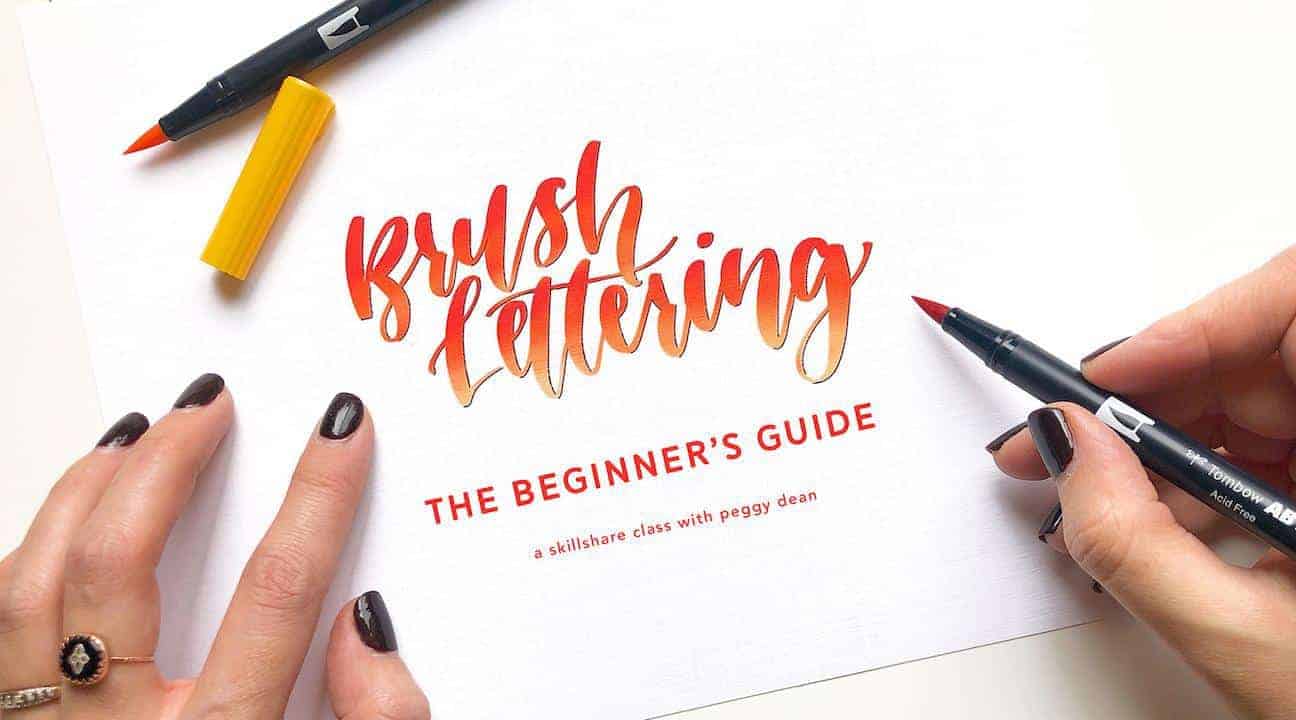
Brush Lettering: The Beginner’s Guide
Peggy Dean is a master of lettering, and this class is perfect for beginners. She goes through all the basics, such as choosing your supplies, holding your pen the right way, and basic strokes to practice.
Then she uses more advanced techniques, such as bounce lettering and creating ombre effects. It’s multiclass with everything you need to know about lettering.
Her class also comes with tons of free printable worksheets, which are great for you to practice your lettering skills.
Brush Lettering Basics – Stroke By Stroke Guide
This is probably my favorite lettering class so far since it goes into detail on every aspect of lettering. From materials and basic strokes to spacing and lettering structure.
This is your guide to creating your own style of lettering and mastering all the basics.
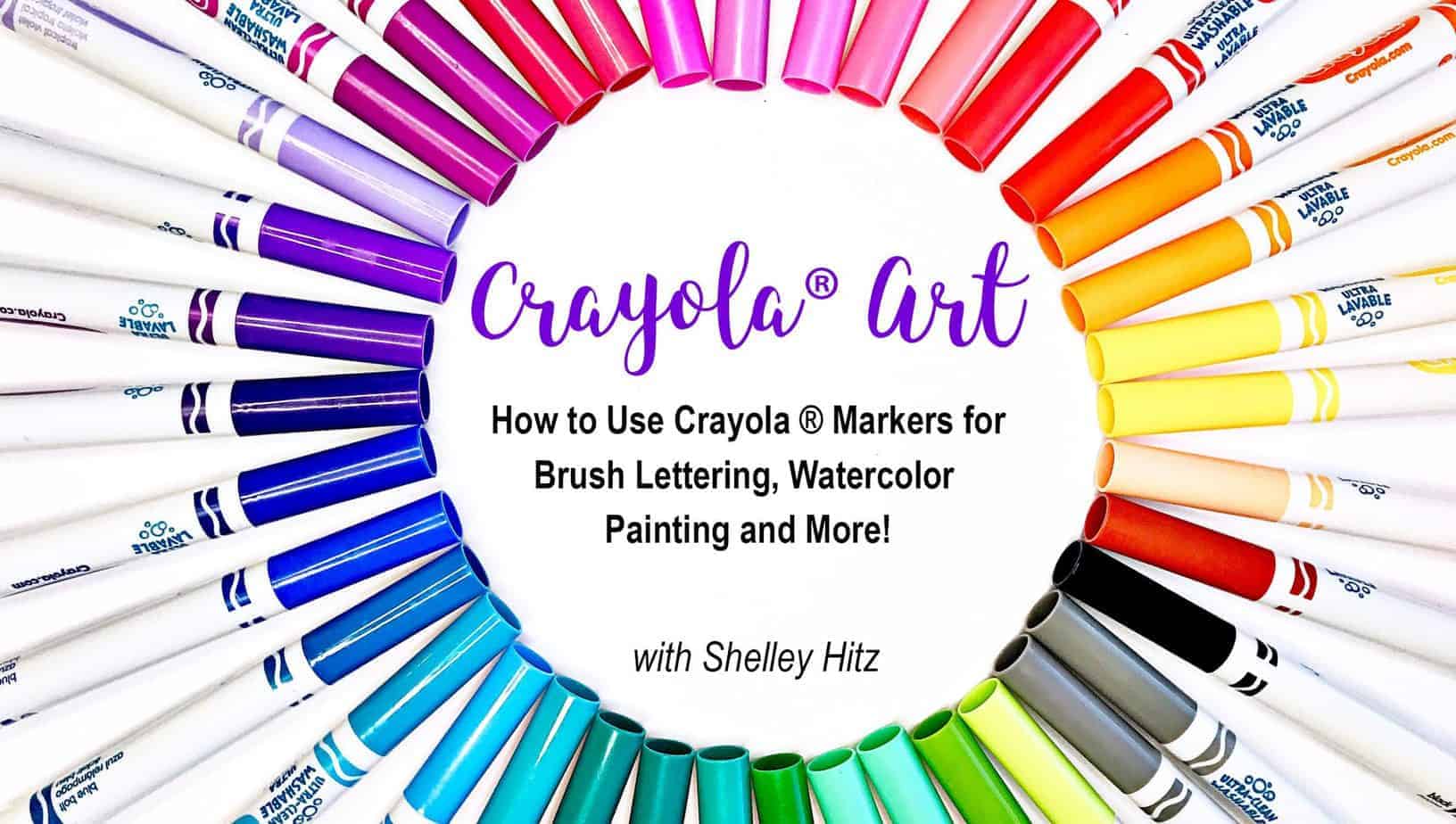
Crayola Art: How To Use Crayola Markers For Brush Lettering And More
Decided to start with a more budget version for your lettering? No problem, because Crayola Super Tips are great markers; they come in a variety of colors, and you can create lettering pieces just as beautifully.
This class is definitely for you since it will teach you how to get the most from your Crayola Super Tips with lettering techniques and so much more.
Waterbrush Lettering Essentials
Another way to create brush lettering is by using a waterbrush and watercolors. In the end, you get a softer result, and of course, you can play around so much more with the colors.
If this sounds like your jam, this course is perfect for you. In this 1 hour course, Teela goes into every detail of brush lettering with watercolor and covers everything from complete basics to advanced techniques.
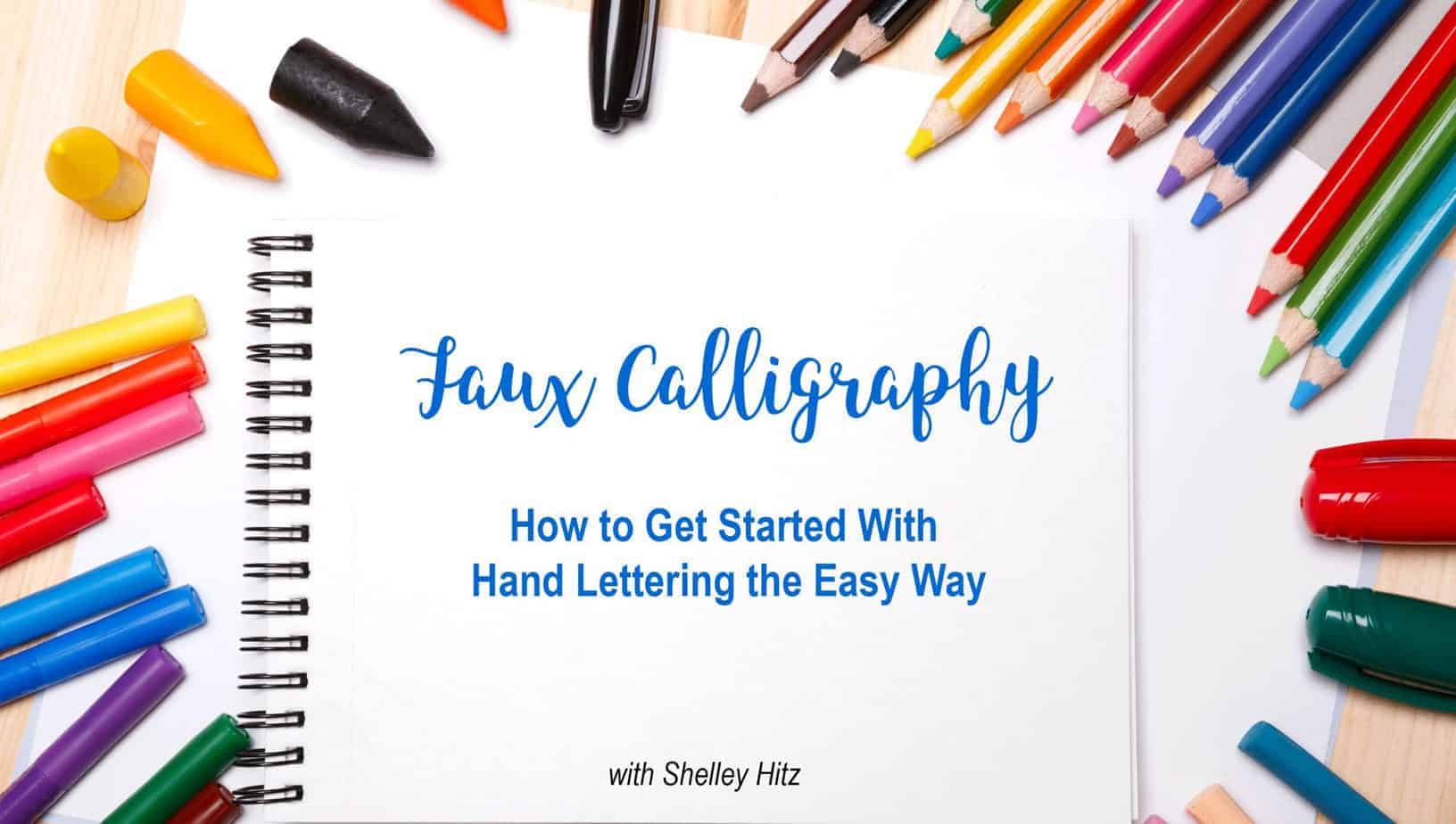
Faux Calligraphy: How To Get Started With Hand Lettering And Modern Calligraphy The Easy Way
This isn’t exactly brush lettering, but it can bring you similarly pretty letters, and it’s a great beginning while you’re still working on your lettering.
This course walks you through faux calligraphy and how to master it. Finish this class, and you’ll be able to create beautiful lettering pieces easily!
For more, check my post Free Online Calligraphy Classes.
Books
Another great way to study is by using books. Many amazing books talk a lot about the basics of lettering, font styles, and everything else you need to know to master your lettering skills.
The Ultimate Brush Lettering Guide
This book was my entry into the lettering world, and Peggy Dean knows what she’s talking about! She goes into every detail of lettering, from basic strokes and rules to font types and how you can break the rules to create your unique style.
- Dean, Peggy (Author)
- English (Publication Language)
- 160 Pages - 07/24/2018 (Publication Date) - Watson-Guptill (Publisher)
Lettering With Purpose
This book chews all the details of lettering and explains how you can create your own alphabet and decorate it with flair. Moreover, it offers 100 prompts to spark your imagination and put your lettering skills to use.
- Luiz, Brittany (Author)
- English (Publication Language)
- 144 Pages - 09/01/2017 (Publication Date) - Walter Foster Publishing (Publisher)
Hand Lettering: An Interactive Guide To The Art Of Drawing Letters
A fantastic book that goes into detail on how you can draw letters, modify them to your own liking, and create beautiful lettering pieces. It also explains different lettering styles to inspire you to create your own.
- 7.5" W x 9.5" H x 1" D
- Hardcover Book
- Megan Wells (Author)
Foxsy
If you’re ready to invest in yourself and your creativity – Foxsy is the way to go.
It’s an amazing resource built specifically to help you awaken your inner child and work on your creativity.
The platform and some of the courses were created by Shelby from Little CoffeeFox, who is amazing at brush lettering.
Be sure to check all the courses here, and know that if you use my link you’ll be able to sign up for the Early Adaptor price, which is basically 25% off.
To learn more about the platform, check my post Foxsy: Learn Lettering, Doodling, Watercolors and more.
Breaking The calligraphy Rules
Now that -hopefully- you know your lettering basics, it’s time to break all the rules and create your unique lettering style!
The two techniques you can use to achieve it are bounce lettering and using flourishes.
Brush Lettering Flourishes
Flourishes are decorative elements added to your letters. These are swirls you can find at the end of letters or curly lines under or over the word.
It’s a fun way to add a character to your letters or even fill out spaces in a lettering piece you’re creating.
Flourishes come in different forms and there are tons of ways you can add them to your letters. For a beginner, try adding flourishes to descenders (g, j, p, q, y) and ascenders (b, d, f, h, k, l), since these are the easiest ones.
But just like all the other styles, you need to practice and experiment until you find something that works best for you.
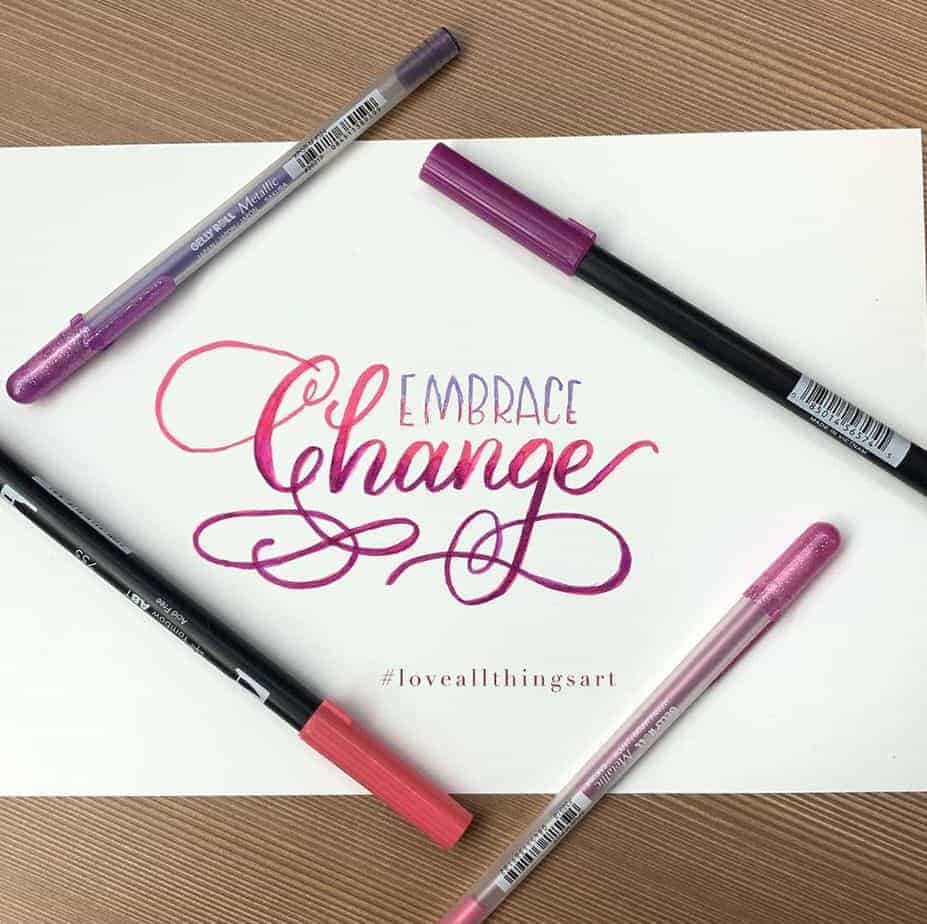
If you want to learn more about flourishing, check out this book, it will tell you all about the different types and techniques to flourish your letters.
You can also check out Skillshare class: How To Flourish. You can take it for FREE if you use this link and learn everything about flourishing your letters and lettering pieces. The class also includes a very helpful workbook.
Bounce Lettering
Another way to customize your lettering style is by trying bounce lettering.
Remember the rules on where to put your letters and to follow the grid when your letter?
Well, bounce lettering essentially breaks them all and pushes you to think outside the box or lines, in this case.

I’ll give you an example with a work hello. Here in pencil is how I would write it if I followed all the rules.
When you try bounce lettering, you move all the liners, so your letters are suddenly on different levels. In the end, your letters look more fun and vivid.
Here is an example with the guidelines.
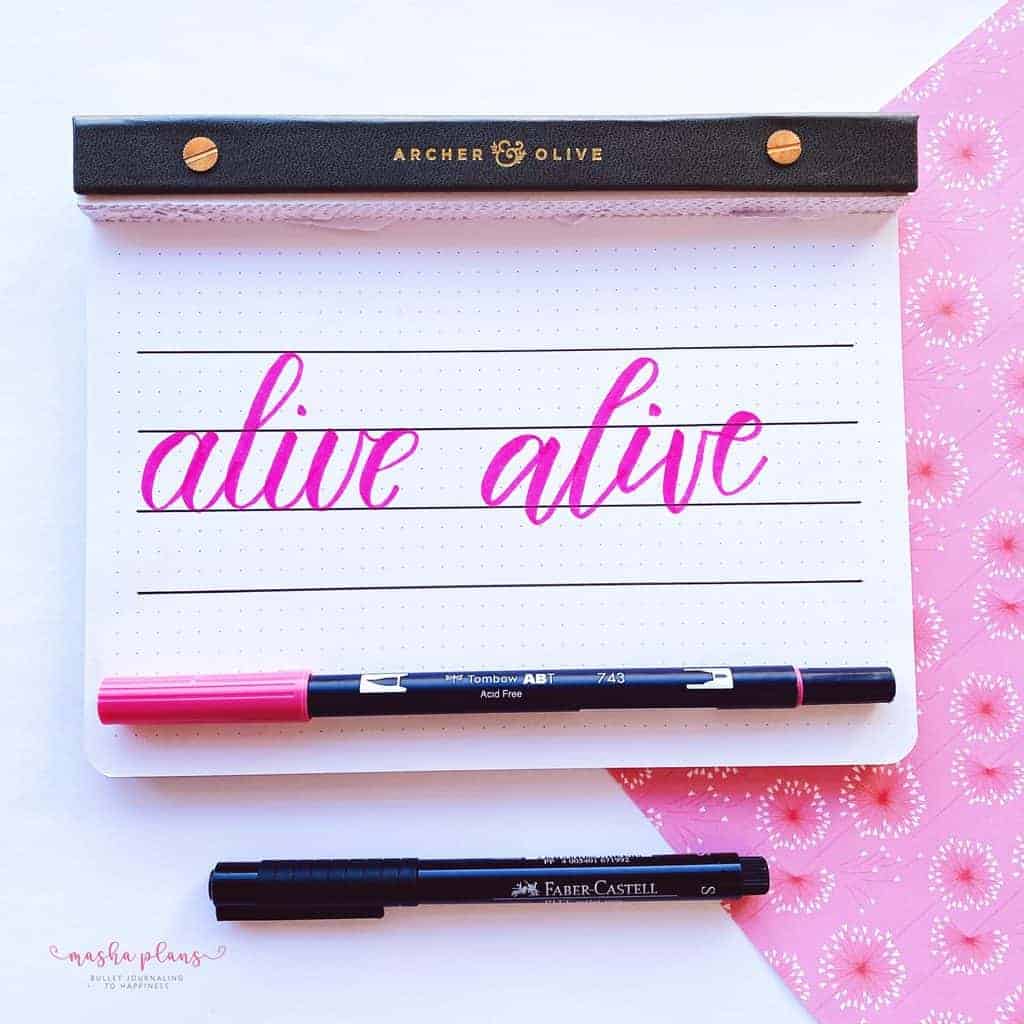
As you can see on the left it’s normal calligraphy, and on the right, it’s a bouncy style.
If you want to learn more about bounce lettering and how you can break the rules to create your own – check out this Skillshare course by Peggy Dean, who absolutely is a master of bounce lettering. Her class comes with free practice worksheets.
And remember, you can take all these classes for FREE if you use this link.
Enhancing Brush Lettering
There are other ways to add more spice to your brush lettering, it’s not only about flourishes and bouncing.
One of my favorite and pretty simple ways to do it is by creating a shadow, and you can see many different ways to do that in my post on 11 Ways To Add Shadow To Your Brush Lettering.
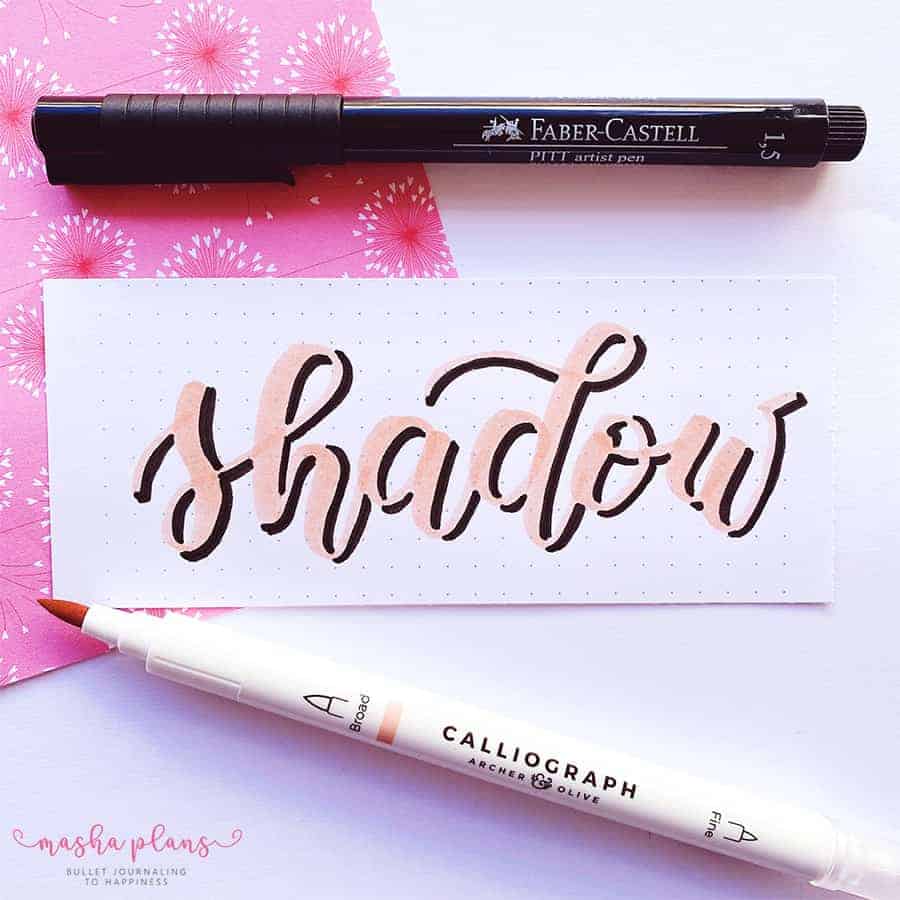
Apart from playing with ways to ad shadow, there are other tiny things you can do.
It doesn’t have to be that complicated either, just play around with lines and colors and you can come up with some pretty fun effects.
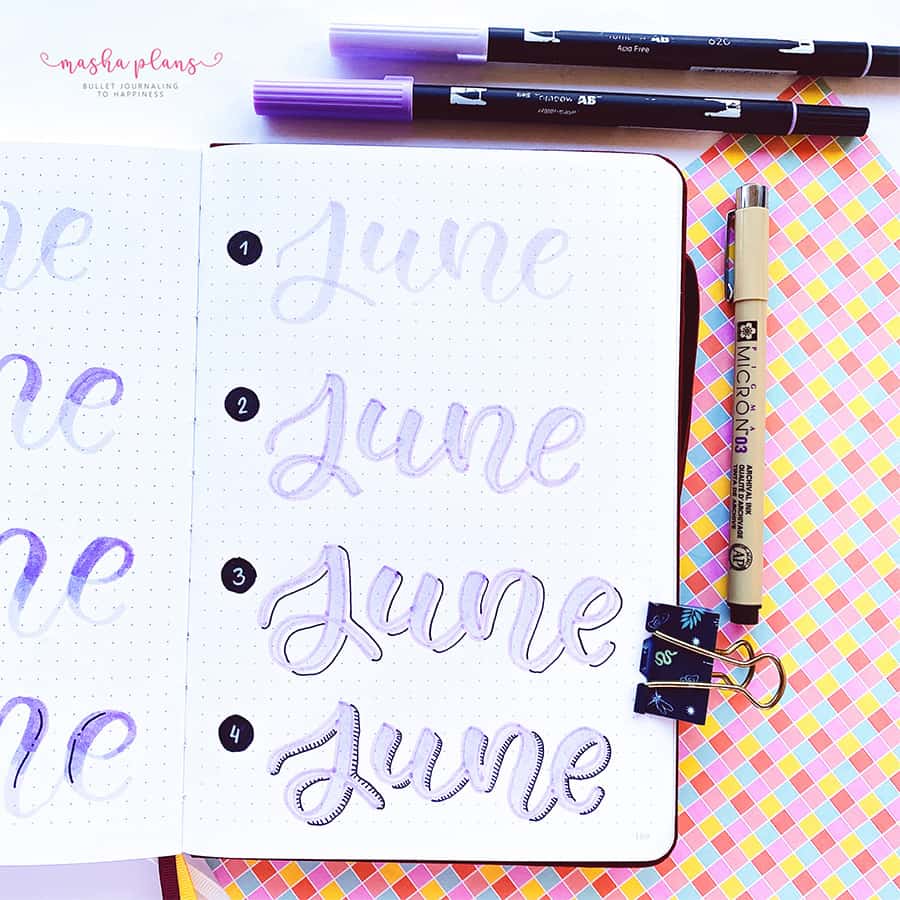
This exact shadow is something I used the most myself, but there are a few more fun ideas you can try.
Check out my post How To Enhance Your Brush Lettering for more inspiration, including step-by-step instructions for each effect.
Finding Your Hand Lettering Style
Finding your style might take some time and can be a bit frustrating, but it’s all about the journey, so try to enjoy your lettering adventures.
Here are a few tips for building your style:
- Practice. It’s all about practice – the more you do, the more you’ll start seeing some things you like and which ones you don’t really want to see in your lettering.
- Create a vision board. Physical or not, but start creating images of lettering styles you like and that inspire you. It will help you figure out in which direction you’d like to move with your style.
- Study the work of others. Look for inspiration everywhere and each time you find something you like – study it. Look at the style, and the elements they used, and think of what exactly you like about it and what parts you don’t like that much.
- Break the rules. Finally, don’t create a cage around your lettering; bend or break the rules, try different styles and scripts. Even if it doesn’t work, it’ll be a great experience and a lesson for the future.
Get Your Freebies
Lettering is a fun way to add more creativity not only in your Bullet Journal but in many other crafts and daily situations.
To help you with that, I created some free worksheets and some more resources to make sure you can enjoy this new hobby and master the skill.
Where are you on your lettering journey? What troubles are you having? Let us know in the comments!
Hope this post was useful. If you find it so, please share! If you enjoy my content and want to show appreciation, please consider supporting me with a cup of coffee.
And remember: Keep Bullet Journaling, and Don’t Be A Blob!






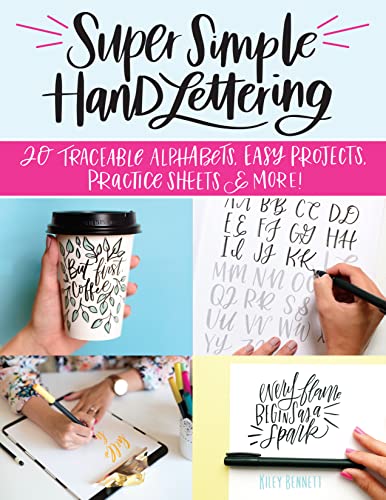





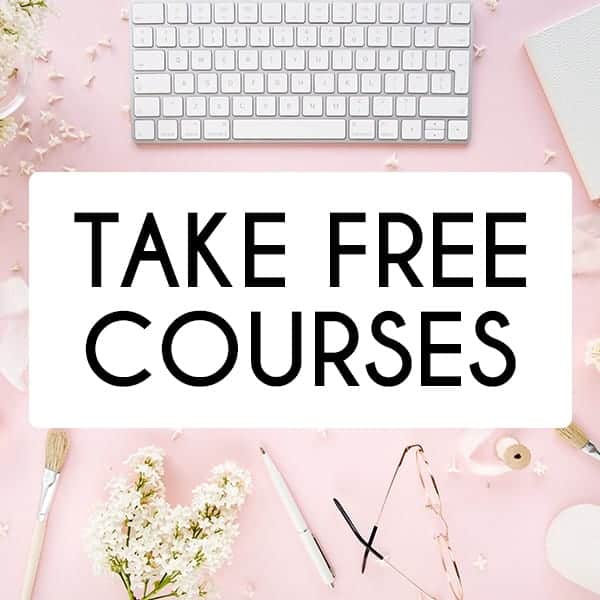
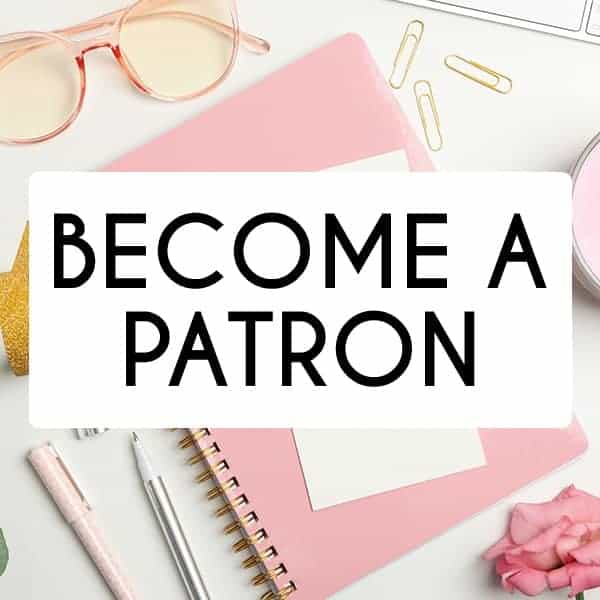
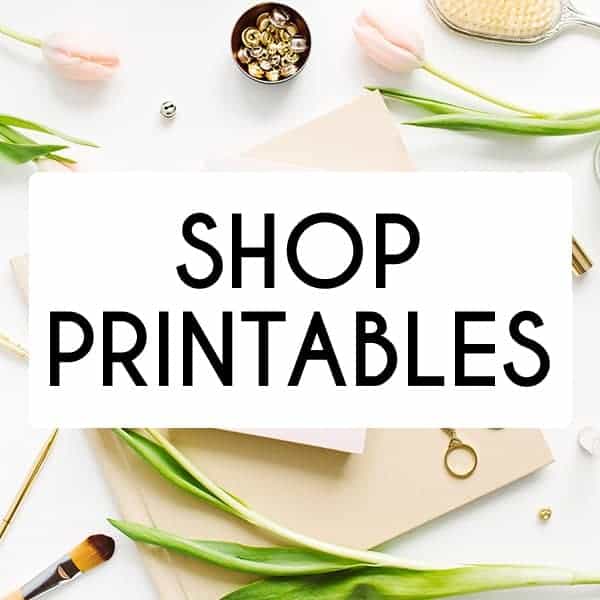
That was dead useful 🤩🤩
Can you please make a lettering course too? I’m just about to finish the doodling one…. It’s awesome!
Glad this was useful!! I might have something for the lettering at some point ;)
Lots of ideas and a refresher course for me. I was an Elementary Art teacher and often helped students with their poster lettering. Guide lines was a major help suggestion but hard for that age to implement.
Glad this was useful!